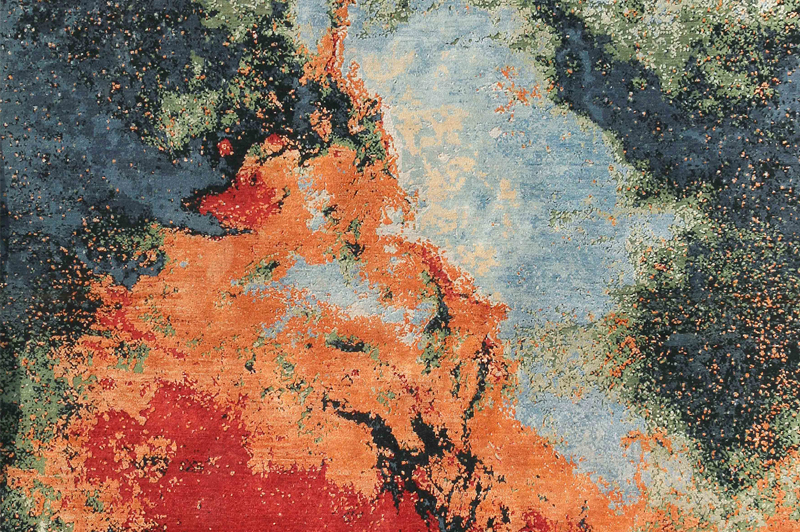
The Art of Custom Rug design How to personalise your living space with unique creations
A custom rug design can be considered the easiest and most effective method to enhance the aesthetic style of your living space. This can be useful for tailoring a rug to your taste, lifestyle, and design goals for your interior. Thus, it becomes an essential piece that ties a room together while reflecting your individuality and makes your living space or any premise you are decorating look unique. Here's how you can do it:
1. Start with Inspiration and Concept
Review your Space: Identify what is in your room now—you will note furniture, the wall colours, textures, and then the general setup. Determine what atmosphere you desire: cosy, classy, or basic, minimalist.
Source of Inspiration: Take inspiration from your favourite styles: modern, traditional, bohemian, or eclectic. Ideas may be derived from nature, art, architecture, or even cultural symbols.
2. Material Choice
Natural Fibers Wool, silk, cotton, and jute: Each provides unique textured properties. Cotton is more durable yet soft, while silk brings a feel of luxury in addition to a shining sheen. Synthetic Fibers Nylon, polyester, and polypropylene are less costly and resistant to stains. These are best used for high-traffic areas, homes with pets, or families. Eco-Friendly Options Use recycled materials for added, connected sustainability, or look to more primitive natural fibres like hemp or bamboo.
3. Size and Shape
Custom-fit piece: A custom rug lets you determine the exact size and shape you want for your space. Whether it is an oversized rug for a large living room or it is an unusual angle for that tricky corner or any other specific need, a custom piece fits perfectly.
Standard vs. Unique Shapes: While rectangles are the norm, often it becomes quite intriguing to deviate from that and seek circular, oval, or even organic free-form shapes.
4. Color Palette
Complementary Colors: The rug should complement the colour scheme one has set for the room already. One can choose colours that complement the walls and furniture in the room or differ from those to make the rug a centrepiece of the room.
Bold vs. Subtle: Decide if you would like the rug to really pop, bright, and a real showpiece colour-wise and soft, nuanced hues, or bland, just blending with the colours.
5. Pattern and Design
Geometric Patterns: Gives the room a fresh, clean feel. Look at abstract designs or repeating shapes for that modern feel.
Organic and Natural Motifs: Floral, leaf, or animal inspirations simply give a home a warm feel and are earthy.
Cultural or Artistical Influence: Adding little cultural aspects or artistically inspired styles gives the rug attention. Seek inspiration in Morocco, Persian, or tribes for classic, time-defying designs.
6. Texture and Pile
The high pile goes against the low pile. It depends on the pile height as the rug becomes sensitive as well as durable. Highly piled rugs are soft and rich in texture, just like the shag and plush styles, and are best suited for bedrooms and cosy living rooms, while low-pile rugs are flatweaves, tough, and easy to clean, which makes them perfectly designed for high-traffic areas.
Textured Techniques: Incorporate techniques like tufting, weaving or knotting. This will add raised patterns or mixed textures to the product and, consequently, will also create a tactile experience within the room, which is really of a visual interest.
7. Personalization and Custom Art
Monograms or Initials: It adds a personal touch by giving initials or family crests to your rug to make it yours in quite a signature way. This is an excellent way to make a space uniquely yours.
Custom Art or Graphics: Work with a designer or an artist on this piece, which may be about personal interests or hobbies and maybe even favourite places you have visited. This can have the potential to become a self-art work.
9. Functional Consideration
Durability: If it is going to go in a high-traffic area, it is good to choose something that is very durable and also clean and easy, as well. Wool is a really common choice that proves to be rather resilient. Synthetic fibres can handle stains really well.
Allergies: If there are allergies present, then hypoallergenic materials will make all the difference. Natural fibres such as wool can filter air pollution within the home.
Underfoot Comfort: If you want a softer feel underfoot in living rooms, for instance, you want medium- to high-piled wool or silk blends.
10. Maintenance and Care
Cleaning Requirements: How easy is the rug to clean? Natural fibres such as wool tend to be harder to clean but give a longer lifetime. Synthetic will likely be easier to maintain but won't last as long.
Protecting your Investment: Place rug pads on the bottom of the rug to prevent slipping and to add life to the rug. Regular vacuuming and professional cleaning will keep it in great shape too.
11. Investment and Value
Handmade vs. Machine Made: Handmade rugs, such as hand-knotted and hand-tufted designs, are generally more expensive but have unparalleled craftsmanship and longevity. The machine-made rug can be a more budget-friendly choice.
Longevity: You should consider an exclusive rug as an investment in your house since it can remain for many years if taken care of well. Rugs of good quality and manufactured with great craftsmanship will maintain their beauty together over time.
Conclusion
A custom rug design is your way of bestowing your living area with that personalized style and reflection of personal creativity and value system. So, you might want to materialize, colour, pattern, and texture to create a different thing which binds your whole room. A custom rug might make your space look like home, whether done in timeless elegance or bold modernity.

